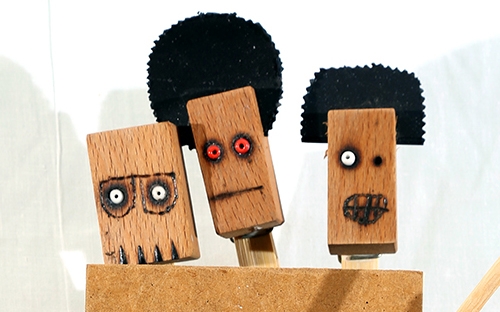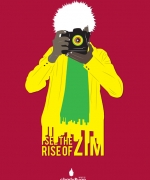A Trap called Blackness: The albatross of an Identity built on Reaction
What were we before we were black?
Blackness was constructed as an Antithesis to whiteness. Should we be studying blackness, should we be even wasting time trying to define it. If we want to study anything I think it should be whiteness and how to deconstruct its poisonous assumptions of superiority and privilege. The possessiveness of whiteness formulated the ‘white race’ which was never a normal nor a natural entity, but is instead a social category constructed and maintained since the late 1600s in America.
What were we before we were black? How did we define ourselves before somebody called it to our attention that we were non “White”? Should an identity be constructed on the foundation of a reaction to a stimulus? Will that identity not therefore depend on that same stimulus for its growth development and definition? In this case the stimulus is an erroneous Aryan and Eugenic perception of “othering” that has been the root of some of the most catastrophic man-made disasters in the history of mankind.
When our ancestors in Zimbabwe first encountered the first Caucasian of Portuguese descent in the 16th century and later the British in 1890 their definition of him was not “white “ neither was it based on color. Some of the earliest definitions of the Caucasian were “Vasinamabvi” (those without knees). This name was a simple description of the settlers who wore long trousers which covered their knees (so their knees were obscured from vision). It is safe to say that phenotyping was never part of our ancestral philosophy.
The other early name is “Vabvakure” which is simply translated the one from far away. As conflicts arose because of the greed and arrogance of colonizers other names evolved to fit the usurping attitude of the settler and among them were “Madhunamutuna” which means ghosts or an apparition that disturbs the peace.
It is only at a later stage as the colonial machine perfected Aryan and Eugenic ideologies that molested indigenous people’s identity do we see names such as “Murungu/Muzungu” “Muchena”, “Mukiwa”. These later names were a result of a victimized people’s reactive psyche of reacting to socio-cultural and economic subjugation. Words like “Vatema” translated black later became common as faulty Identity structures of definition took root. The argument of this paper is That Blackness is a Trap and an Albatross that depends of a Phenotypical Stimulus of Aryan and Eugenic origin. Even the Xhosa in south Africa had earlier names for the Caucasian which did not reference color as a medium of definition. “Ondlebe zikhanya ilanga” is one of the earliest description of the Caucasian and its loosely translated the one through whose ears you can see the sun. This is a rather interesting description of a fellow human being without phenotyping them.
Today the most commonly used name for the Caucasian in most of southern Africa has its roots in a Nyanja word “Muzungu” which means “God”. It makes one uncomfortable to write such a loaded name and ascribe it to a certain group of people who have committed atrocious acts under the same name. Accepting this name is as much of a psychological act of self-attrition as it is socio-cultural and spiritual suicide. The perpetual and erroneous use of this particular name to address Caucasian people has one of the main reasons for sublime distortion and poisoning of The African theological premise. This echoes Ali Mazrui’s description of the complicit African
“African societies are marked by ‘conquerability, docility, malleability,”and fundamental inferiority’ (2005: 69).
It is important to understand that Mazrui’s describes an acquired or rather imposed state of consciousness as opposed to a natural disposition. History is littered with examples of systemic and cultural engineering of Aryan and Eugenic domination of other groups of people. The Adaptation and the widespread use of the word Murungu (Shona), Umlungu (isiXhosa/Zulu), Muzungu (Nyanja) could have more subliminal psychic damage than we know.
In one of his early visits to Uganda Carl Gustav Yung the Swiss psychiatrist and psychotherapist noted in one of his accounts the sad usurpation of the power and place of dreams by a colonial supremacist ideology
“One time we had a palaver with the laibon, the old medicine man.
He appeared in a splendid cloak made of the skins of blue monkeys a valuable article of display. When I asked him about his dreams, he answered with tears in his eyes, “In old days the laibons had dreams, and knew whether there is war or sickness or whether rain comes and where the herds should be driven.” His grandfather, too, had still dreamed. But since the whites were in Africa, he said, no one had dreams any more. Dreams were no longer needed because now the English knew everything!
p319 Memories Dreams Reflections: Carl Gutsav Jung 1961
This account implicates The British in the systemic obliteration of indigenous ways of knowing in which the phenomenon function of dreams was destroyed through the deification of the Caucasian as an all knowing being.
Whenever a people identify themselves by reacting to a stimulus they create an identity crisis that can only be dealt with by deconstructing the stimulus first and then the reaction will follow suit. Black and white episteme have no place in a healthy society they both must be obliterated; to deconstruct one you have to deconstruct the other. Most African Americans movements are encountering a Philosophical Albatross, this situation is described by Edgar Allen Poe as a mental straight Jacket. This can only be dealt with by addressing the trap of blackness and deconstructing the stimulus that formulated the idea of black as an identity. In trying to address socio-political and economic inequalities post colonies like South Africa are finding themselves in a trap of both semantics and ideology concerning the idea of blackness. One is reminded of James Baldwin’s words
“You are the Nigger babie...it isn’t me”
Bibliography
Memories Dreams Reflections: Carl Gutsav Jung 1961
The Re-Making of Africa: Ayi Kwei Armah and the Narrative of an (Alter)-native Route to Development: Gbemisola Adeoti, Africa Media Review, Volume 13, Number 2, 2005, Council for the Development of Social Science Research in Africa, 2005 (ISSN 0258-4913), Department of English, Obafemi Awolowo University, Ile Ife, Nigeria.
“You are the Nigger babie .it isn’t me”: the words of James Baldwin in the film “Take This Hammer” filmed with James Baldwin in the spring of 1963 was produced for National Education Television by the KQED film unit, San Francisco
From an Article “whose black is it by Omeka Okerekehttps://minorliteratures.com/2015/07/02/black-portraitures-whose-black-i...
Blackness was constructed as an Antithesis to whiteness
“Blackness, as a social construct, is seen as immutable. It exists as a negative against which the so-called positive of whiteness measures and sets itself against”.
“Whiteness must be destroyed. But, in doing so, blackness must be destroyed as well”
Edgar Allen Poe, TOWARDS THE END OF WHITENESS AND BLACKNESS,
https://kathmanduk2.wordpress.com/2011/10/26/towards-the-end-of-whitenes...





